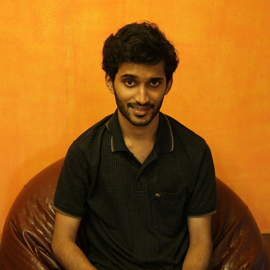How (in)credible is this? 2016 as the year of fake news on WhatsApp

Social Media is arguably the most powerful tool we have at our disposal to make a difference. And not very far from it, where marking a difference is concerned, is the messaging application - WhatsApp.
2016 has seen WhatsApp being used as a platform to circulate news, fake or otherwise. The news shared got forwarded, almost virally, by people who did not bother to check its authenticity creating quite a ruckus in some cases.
While you reminisce about how many WhatsApp groups you muted or messages you didn't even bother to read, we'll tell you a little story -
Even a month after demonetisation, a worker in Wazirpur's Industrial area was sharing his thoughts on notebandi, vociferously defending it through absurd arguments.
Catch asked him where he got the information that he was so confidently sharing. He said he had read a really long WhatsApp message just the other day.
Let's look at what social media had to offer this year in this new age of WhatsApp news - which may lack credibility but - has all the right ingredients to provoke hundreds to forward them with surprising tenacity.
When you talk about fake news purported through social media, the matter that comes into most significance is demonetisation. You know where this is going.
Here's a look at some of the more popular rumours that did the rounds on WhatsApp during demonetisation. The major drawback of all this?
Some, like the worker from Wazirpur, still believe the stories they read on WhatsApp, forwarded with the caption - "Please share to create 'maximum awareness'".
1. Rs 2000 notes will use "embedded NGC" technology for tracking
Apparently the government had ameliorated present Global Positioning System (GPS) technology to make the notes act as a signal reflector.
No such chip exists, unfortunately much to the dismay of those in support of demonetisation.
2. Radioactive ink
The latest and the most disturbing rumour doing the rounds, especially on WhatsApp, is the presence of radioactive ink in the new currency notes. Several websites had also stated presence "radioactive isotope of Phosphorous (P32)" - which has 15 protons and 17 neutrons - in the new notes. This apparently helps the I-T department conduct raids when they detect high levels of radioactivity in one place.
This is also the script for a new episode of CID.
3. Printing errors in the Rs 2000 note
Messages doing the rounds on WhatsApp pointed out printing errors in the Rs 2000 note in Hindi and Urdu. The are no printing errors in any of the notes.
The rumor was that the message says 'don hazaar rupaya' instead of 'do hazaar rupaya' and that in Urdu 'hazaar' is written as 'bazaar'. The fact is in both Konkani and Marathi, 'do' is 'don'.
Other authentic 'fake news'
A WhatsApp message on the shortage of salt that did the rounds last month created panic among the masses in Uttar Pradesh. The messages stated that salt was being sold at exorbitant prices as high as Rs 250 per kg, because of the shortage. Huge crowds gathered in front of shops to buy their supplies, actually creating fake shortage for a while.
Probably the most important news this year was the death of Tamil Nadu Chief Minister J Jayalalithaa. Almost anyone with a smartphone had an 'insight' into her health with some even sharing her health report cards along with minute by minute updates.
This even led to many national publications declaring her dead hours before she was actually pronounced dead by hospital authorities.
Post Jayalithaa's death, a lot of spotlight was given to her family's close aides. Less than a week after her death a photograph of a young woman with similar features to that of the late chief minister started spreading on social media especially, and yet again, on WhatsApp.
The woman was rumoured to be the late CM's illegitimate daughter. Eventually, rubbishing the claims and putting absurd speculations to rest, singer Chinmayi Sripada through a post on Facebook had to negate the rumour that the woman in the picture was Jayalalithaa's daughter. She clarified that the woman in the photo was actually Mridangam Vidwan, famous classical musician V Balaji's daughter.
"If people were half as interested in investing the time sharing WhatsApp forwards into being better citizens, our country would be way better," she said through the post.
Fake it till you make it?
Fake news is of course not a new concept. In 1814 a group falsely representing government agents faked Napolean Bonaparte's death, while in 1755, just after the Lisbon earthquake, rumours were galore of a divine intervention that saved millions of survivors.
Even post the 2016 US Elections, Facebook had to partner with organisations that are obligatory to the the International Fact-Checking Network's code of principles whose core responsibility was to flag links on Facebook and attach fact checks accessible to the audience.
This was after Facebook was accused of influencing the elections with an increase in number of fake news articles.
With an overabundance of news sources, the difficulty of finding a credible source increases. Without a much required unbiased filter, however utopian that sounds, WhatsApp and social media news could sound the death knell of credible journalism and give way to yellow journalism and those who thrive on it.
Edited by Jhinuk Sen
First published: 24 December 2016, 15:32 IST





![BJP's Kapil Mishra recreates Shankar Mahadevan’s ‘Breathless’ song to highlight Delhi pollution [WATCH] BJP's Kapil Mishra recreates Shankar Mahadevan’s ‘Breathless’ song to highlight Delhi pollution [WATCH]](https://images.catchnews.com/upload/2022/11/03/kapil-mishra_240884_300x172.png)

![Anupam Kher shares pictures of his toned body on 67th birthday [MUST SEE] Anupam Kher shares pictures of his toned body on 67th birthday [MUST SEE]](https://images.catchnews.com/upload/2022/03/07/Anupam_kher_231145_300x172.jpg)






